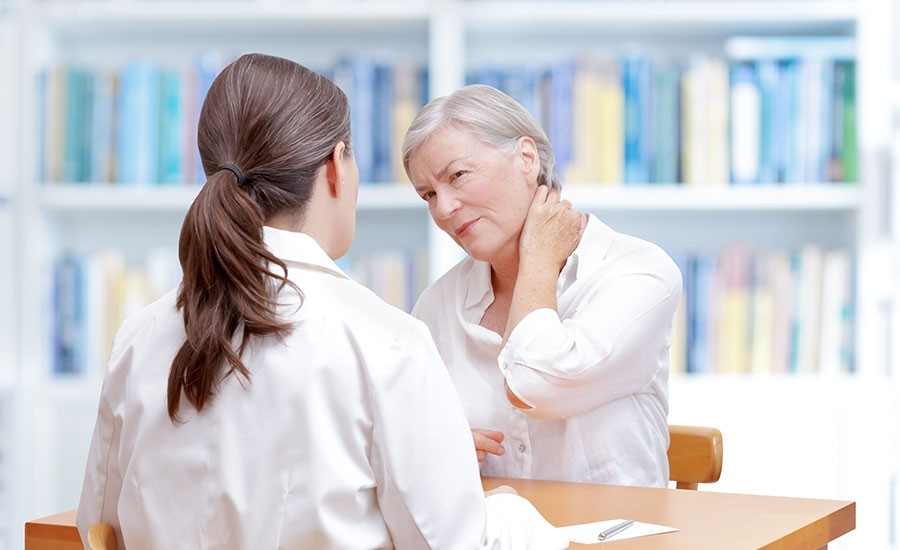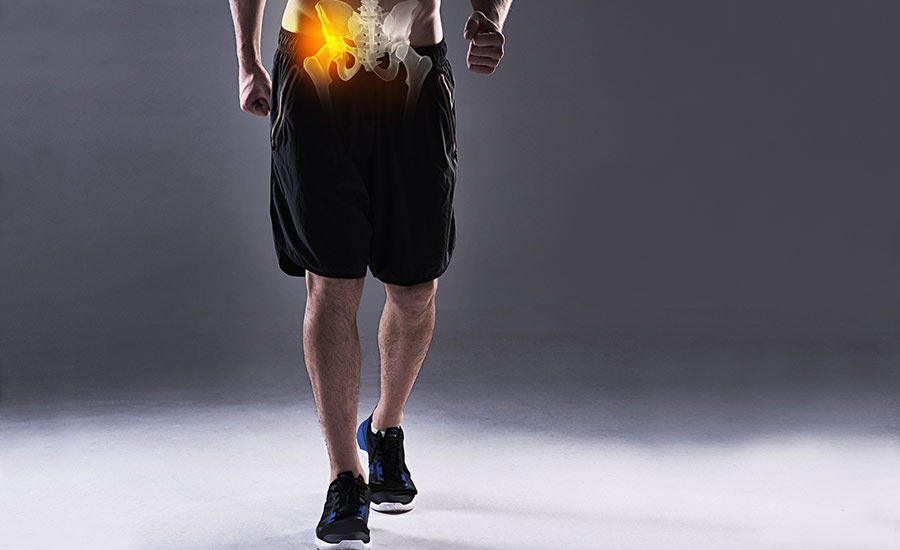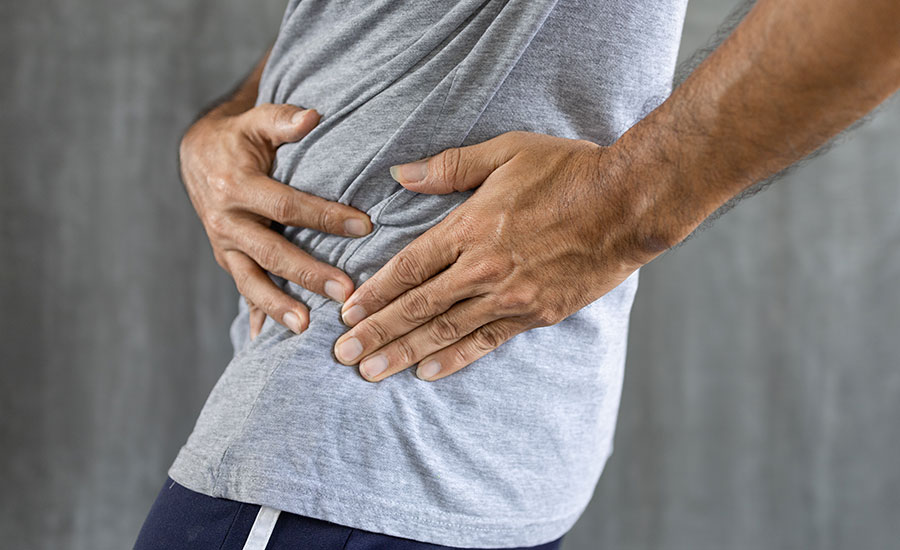
The hip joint, while robust and resilient, is not immune to injury. From high-performance athletes to the senior population, anyone can find themselves dealing with hip pain and discomfort.
It could be a sudden twinge from an acute injury or the grinding ache of a chronic condition that tells you something is wrong.
We’ll explain the most common types of hip injuries, including the causes and symptoms, and share the best treatment options available.
Leading Causes of Hip Injuries
From accidental falls to certain medical conditions, hip injuries can happen fast and unexpectedly, or gradually over time.
The most common causes of hip injuries include:
- Falls: Falls are one of the leading causes of hip injuries among older adults, often resulting in hip fractures. Conditions that affect balance or coordination, such as Parkinson’s disease or peripheral neuropathy, can also increase the risk of falls.
- Trauma: Motor vehicle accidents, sports injuries or any direct blow to the hip area can lead to a variety of hip injuries, including hip dislocation, fracture or labral tear.
- Overuse: Repetitive activities or movements — particularly in sports or physically demanding jobs — can lead to injuries such as stress fractures, tendinitis or bursitis.
- Poor biomechanics: Incorrect technique during exercise, sports or physical work can place excessive stress on the hip joint and lead to injuries. This includes improper lifting techniques or poor running form.
- Degenerative conditions: Age-related conditions such as osteoarthritis and osteoporosis weaken the hip joint and bones, making them more susceptible to injuries.
- Muscle weakness or imbalance: Weak or imbalanced muscles around the hip can fail to support the joint properly, leading to increased risk of injury. This includes conditions such as hip dysplasia or muscle imbalances caused by improper training or lack of conditioning.
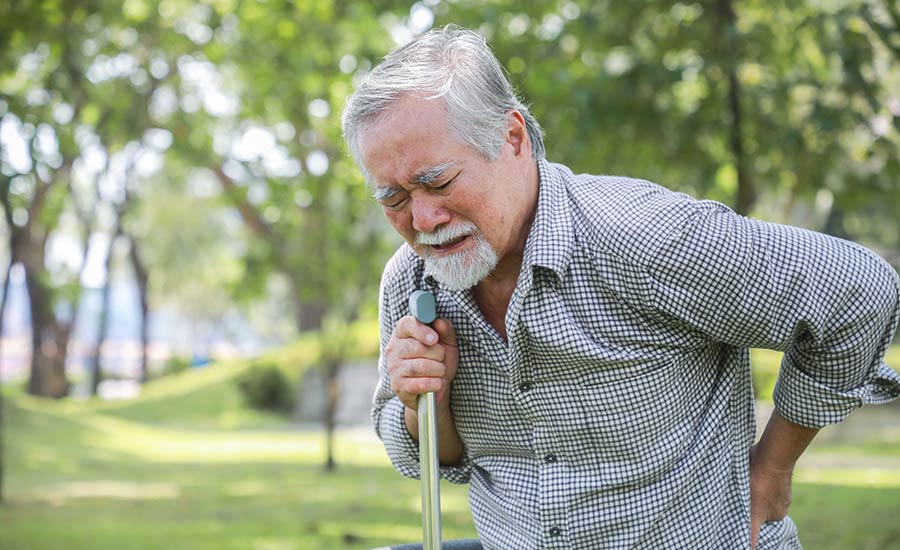
Common Hip Injury Symptoms
Hip injuries can present a variety of symptoms depending on the type and severity of the injury.
The most common hip injury symptoms include:
- Pain: This is the most common symptom of a hip injury. The pain can be sharp and sudden, or it can be a dull ache that worsens over time. It might be localized in the hip area or radiate to the groin, thigh or knee.
- Swelling or inflammation: These are common responses to injury. Swelling around the hip joint may indicate an injury like a fracture, dislocation, bursitis or tendinitis.
- Difficulty walking or moving: If you find it hard to walk or move your leg, it may be due to a hip injury. This could manifest as a decreased range of motion, limping or the inability to bear weight on the affected leg.
- Stiffness: This can be an indicator of arthritis or other degenerative conditions affecting the hip. It can also occur after a period of immobility following an acute hip injury.
- Clicking or popping noise: A clicking or popping sound or sensation in your hip during movement can indicate conditions like snapping hip syndrome or a labral tear.
10 Most Common Hip Injuries
The hip joint is susceptible to a variety of injuries, from acute trauma to degenerative conditions. These injuries can significantly impair your ability to perform daily activities and lead to chronic discomfort.
The 10 most common hip injuries include:
1. Hip Fracture
A hip fracture is a serious injury that involves a break in the upper part of the femur (thighbone) near where it meets the pelvis at the hip joint.
Research has shown that in 98% of cases, hip fractures are caused by falls — particularly in elderly people with weakened bones.
Stress injuries such as long-distance running or high-impact traumas such as car accidents can also result in hip fractures. The most often symptom of a hip fracture is severe pain in the hip or groin area. The pain is usually exacerbated by any attempt to move or put weight on the leg on the side of the fractured hip.
2. Hip Dislocation
A hip dislocation occurs when the head of the femur (thighbone) is forced out of its socket in the hip bone.
This can happen due to severe trauma or impact, such as a car accident or a fall from a significant height. In some cases, a dislocation can also occur due to a sports injury or from a severe twist or bend at the hip joint.
The most common symptoms of a dislocated hip include severe pain, immobility or limited mobility and visible deformity.
3. Labral Tear
A labral tear involves damage to the labrum — a ring of cartilage that surrounds the socket of the hip joint. The labrum helps to stabilize the hip joint and acts as a shock absorber.
Labral tears can result from acute trauma, such as a fall or a direct blow to the hip, but they are often a result of repetitive stress from certain sports or activities that involve a lot of twisting and pivoting, like golf, ballet or soccer.
The most common symptoms of a labral tear include hip pain, reduced range of motion, a sense of grinding or popping and stiffness in the hip area.
4. Hip Bursitis
Hip bursitis, also known as trochanteric bursitis, is inflammation of the bursa in the hip. The bursa is a small, fluid-filled sac that acts as a cushion between bones and soft tissues, reducing friction and allowing smooth movement.
Bursitis often results from overuse or repetitive stress on the hip, but it can also occur due to direct trauma, certain systemic diseases like rheumatoid arthritis or lupus, or following surgery or infection.
Typically, pain in the hip is the most common symptom, while swelling and pain that worsens with movement or pressure can also be signs of hip bursitis.
5. Hip Tendonitis
Hip tendonitis is inflammation or irritation of the tendons in the hip — thick bands of tissue that connect muscles to bones.
This condition can result from overuse or repetitive strain, often due to activities that involve a lot of running, jumping or other high-impact movements. Age and certain health conditions like rheumatoid arthritis and diabetes can also increase the risk of tendinitis.
Pain and tenderness are the most common symptoms — typically felt at the point where a tendon attaches to a bone.
6. Hip Synovitis
Hip synovitis, also known as transient synovitis, is an inflammation of the synovial membrane that lines the hip joint. This condition is most common in children between the ages of 3 and 10, but it can also occur in adults.
While the exact cause is often unknown, it may be associated with viral infections, allergies or trauma to the hip.
The most common symptoms include hip pain, limping, restricted hip movement and in some cases a mild fever.
7. Hip Impingement
Hip impingement, also known as femoroacetabular impingement (FAI), is a condition where there is abnormal and wearing contact between the ball and socket of the hip joint.
This can occur because of variations in the shapes of the hip bones, leading to abnormal contact during hip movements. Although FAI is often caused by physical activity, age or previous hip injuries, it is also caused by defects at birth where the hip bones are abnormally shaped.
FAI symptoms often include hip pain, stiffness or locking sensations and can lead to damage to the hip joint over time.
8. Snapping Hip Syndrome
Snapping hip syndrome is characterized by a feeling of snapping or the presence of a popping sound in the hip during activities, including walking, getting up from a sitting posture, or maneuvering your leg. This may be caused by a tendon or muscle sliding over a bony part of the hip.
Although it can be felt by anyone, it’s most common in athletes, dancers and people who engage in activities that require repeated bending at the hip.
As the name of the conditions suggests, the most common symptom is a snapping sensation or sound of snapping. The condition itself is often harmless and more of an annoyance than a cause for concern, but in some cases, it can lead to pain or injury.
9. Hip Flexor Strain
A hip flexor strain involves an injury or tearing of the muscles at the front of the hip, known as hip flexors. These muscles help bend the hip and lift the knee.
Hip flexor strains often occur as a result of sudden movements, such as sprinting, kicking or changing direction quickly, which makes them especially common in athletes.
The most common symptom of a hip flexor strain is sharp pain in the front of the hip, although it can also extend to the groin area. The area affected might also become swollen and tender to the touch.
10. Hip Adductor Strain
A hip adductor strain, often referred to as a pulled groin, is an injury to the muscles on the inner side of your thigh, which are responsible for pulling the legs together and stabilizing the hip and pelvic region.
Hip adductor strains are similar to hip flexor strains and they often occur as a result of poor flexibility or sudden movements, such as sprinting, kicking or changing direction quickly, which makes them especially common in athletes.
The most common symptom is pain, which can range from mild to severe depending on the extent of the strain and can increase when you bring your legs together or move your hip.
Treatment Methods For Hip Injuries
Treatment for hip injuries varies greatly depending on the type and severity of the injury, as well as the patient’s overall health, age and lifestyle.
Common methods for treating hip injuries include:
1. Rest and Immobilization
For minor injuries and strains, the first line of treatment for hip injuries usually involves resting the affected area to allow the body’s natural healing process to take place. This may also involve immobilizing the area to prevent further damage, through the use of crutches, walkers or canes to reduce weight on the injured hip.
In more severe cases, such as certain types of fractures, a brace or cast might be used to immobilize the area.
2. Pain Management
Pain management techniques can range from conservative and non-operative methods, like icing or physical therapy, to pharmacological methods like medications or injections.
Conservative and non-operative methods include:
- Ice and heat: Ice can help reduce inflammation and numb the area to reduce pain. It’s particularly useful in the first 48-72 hours after an injury. Heat, on the other hand, can help relax and loosen tissues and stimulate blood flow to the area. It’s usually recommended once the initial swelling has decreased.
- Physical therapy: Physical therapists can provide exercises and treatments to help relieve pain, improve mobility and strengthen muscles around the hip. This can include stretching exercises, strength training, balance exercises and techniques like massage or ultrasound.
Pharmacological methods include:
- Over-the-counter pain relievers: Nonprescription medications like acetaminophen (Tylenol), ibuprofen (Advil, Motrin) and naproxen (Aleve) can temporarily help reduce pain and inflammation.
- Prescription medications: If over-the-counter options are not effective, a doctor may prescribe stronger pain relievers, like prescription NSAIDs or muscle relaxants.
- Topical pain relievers: These are creams, gels or patches applied to the skin over the painful area. They usually contain ingredients like NSAIDs, capsaicin or lidocaine.
- Corticosteroid injections: If pain is severe and not relieved by other methods, a healthcare provider might recommend an injection of a corticosteroid medication into the hip joint to reduce inflammation.
3. Lifestyle Modifications
Making certain changes to your lifestyle can also aid in recovery and help prevent future injuries. These might include maintaining a healthy weight, improving your diet, avoiding activities that strain the hip and making ergonomic adjustments at home or work.
4. Hip Surgery
In severe cases, or when conservative treatments do not provide relief, surgery might be recommended.
If you’re not sure whether you need surgery, we invite you to consult with our specialists and schedule an appointment at OrthoEast.
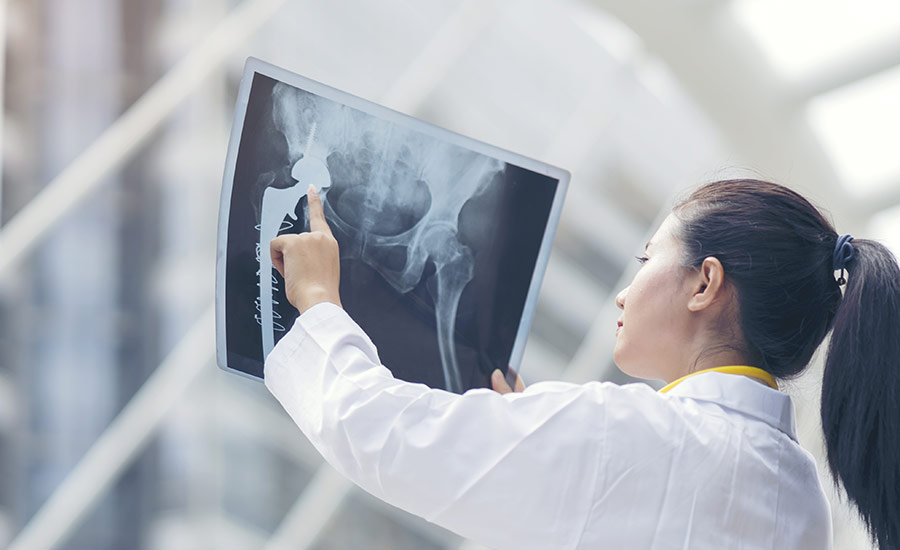
Hip Injuries Treatment at OrthoEast
Our hip specialists at OrthoEast take a conservative-first approach to diagnostics and treatment. All of our specialists are fellowship-trained and board-certified in orthopedic care and offer personalized treatment plans for every patient.
If you are experiencing hip pain that is not responding to conservative treatments, our team will help you determine the right alternative approach to treatment. Our orthopedic surgeons specialize in:
Along with total and partial hip replacement, we offer multiple solutions for pain relief and joint care, including hip surgery for patients with hip dysplasia, arthritis and similar conditions.
We’ll work together to find the root cause of your pain and determine the best option to ensure that you find long-term pain relief.
We have locations throughout New Jersey and New York, where we provide the highest quality of care.
Our hip specialists include Dr. Craig Wright, Dr. Casey Pierce, Dr. William Matarese, Dr. Anthony Scilia and Dr. Thomas Novack, who focus on hip pain relief and to improve each patient’s quality of life.
Meet our physicians, discover the treatment plan that’s right for you and find lasting pain relief.

